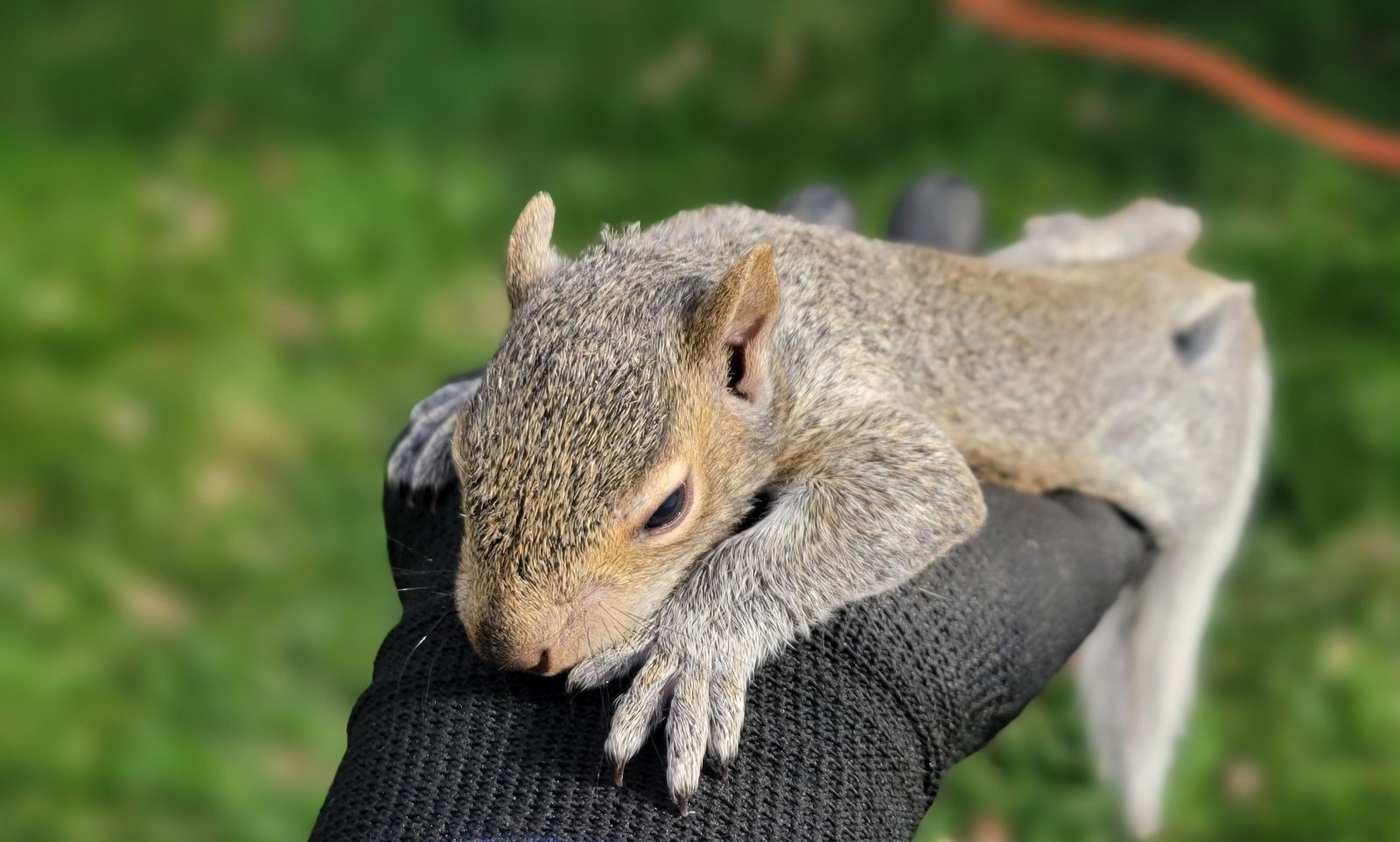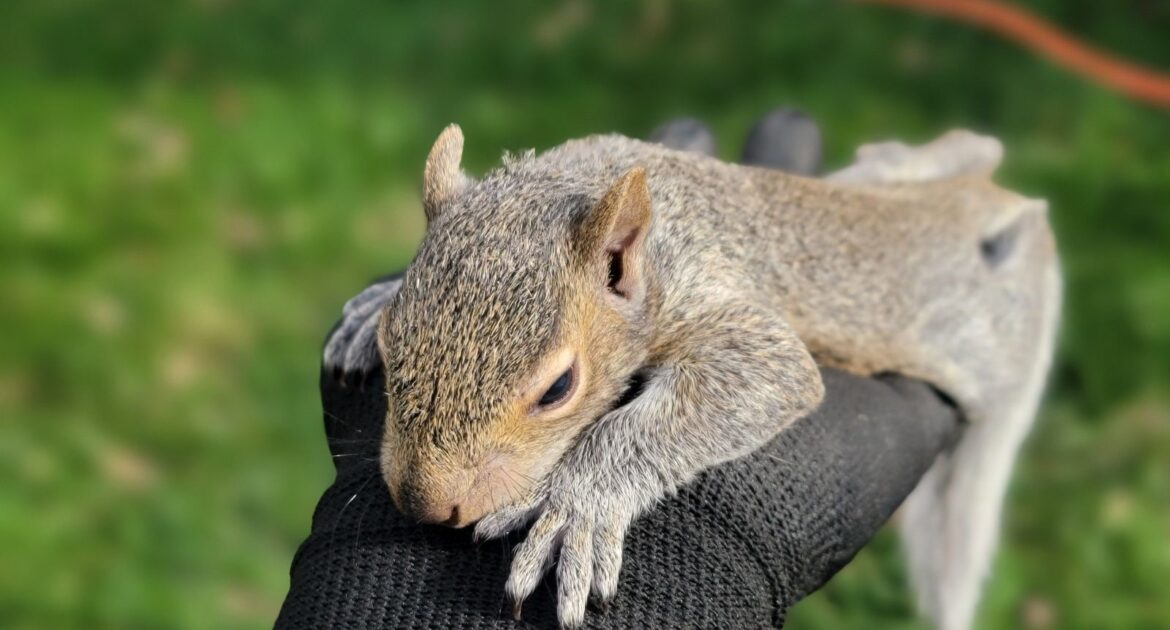Hearing strange noises in your walls can be unsettling. Scratching, scurrying, and even faint squeaks might make you wonder if something has made its way into your home. For many homeowners in Sandy Springs, Georgia, the culprit is often squirrels. These agile animals are clever and persistent, capable of squeezing into small spaces and causing more damage than you might expect.
Here at Skedaddle, we specialize in humane wildlife control, helping homeowners and businesses reclaim their spaces. If you’re hearing those telltale noises from within your walls, it’s time to act quickly. Below, we’ll share how squirrels get into walls, the trouble they can cause, and how to keep them out for good with our Sandy Springs squirrel removal services.
How Do Squirrels Get Inside Walls?
Squirrels are experts at finding ways into buildings. To them, a house isn’t just a structure—it’s a potential home, shelter, and place to raise their young. Here’s how squirrels commonly access walls:
- Roof Access Points: Overhanging branches and power lines make it easy for squirrels to reach your roof. From there, they’ll target gaps in soffits, vents, or chimneys.
- Small Openings: Squirrels only need a hole about the size of a golf ball to squeeze through. They can exploit existing gaps or even chew through materials like wood or plastic to create entry points.
- Damaged Areas: Weather-worn shingles, deteriorating vents, and loose siding offer easy access. Squirrels are opportunists, so any weak spot might become their doorway.
Once squirrels enter your attic or wall cavities, it’s often only a matter of time before you hear them moving around behind your drywall.
The Damage Squirrels Can Do
While squirrels may seem harmless as they scurry through your yard, their presence inside your home can lead to significant problems. These animals are far more than a noisy nuisance. One of the first issues they create is chewing through wires. Squirrels have teeth that grow constantly, so they’re driven to gnaw on anything to wear them down. Unfortunately, electrical wiring behind your walls often falls victim to their sharp teeth. This isn’t just an inconvenience; it can pose a serious fire hazard that puts your home and family at risk.
Squirrels also create trouble by building nests inside walls. To make themselves comfortable, they tear into your home’s insulation. This activity not only damages the material but also reduces the energy efficiency of your property. Over time, damaged insulation results in higher heating and cooling bills, leaving you with additional costs that could have been avoided.
Another problem caused by squirrels is the waste they leave behind. As they live and move through your home’s walls, they deposit droppings and urine, which lead to unpleasant smells. Beyond the odors, these waste materials can attract additional pests and may even result in health concerns if left unaddressed. The longer squirrels remain in your home, the more these problems accumulate.
Finally, squirrels can cause real structural damage. Their constant chewing doesn’t stop at wires; they will gnaw through wooden beams, drywall, and other structural materials. This weakens your home’s framework and can create substantial repair expenses over time. From damaged wires to compromised insulation and structural harm, the impact of squirrels inside your home can quickly escalate if not addressed.
The Squirrels of Sandy Springs and Atlanta
Sandy Springs, located just north of Atlanta, has its fair share of wildlife. When it comes to squirrels, you’re most likely to encounter these common types:
Eastern Gray Squirrels: These are the most typical urban squirrels in Atlanta and Sandy Springs. They’re medium-sized with gray fur and a white belly, and you’ll often see them darting across streets or climbing trees.
Fox Squirrels: Larger than gray squirrels, fox squirrels have bushy tails and can range in color from brown to rust-orange. While less common in urban areas, they still make appearances around the outskirts of Sandy Springs.
Flying Squirrels: Though harder to spot because they’re nocturnal, flying squirrels also live in the area. They don’t actually fly but glide using flaps of skin between their legs. Because of their size and activity at night, they may go unnoticed until you hear noises in your attic or walls while you’re trying to sleep.
Sandy Springs’ proximity to parks and green spaces, such as Chattahoochee River National Recreation Area, means wildlife thrives here. While it’s great to share the environment with animals, no one wants them inside their walls.
How to Keep Squirrels Out of Your Home
The key to preventing squirrel problems is making your home as uninviting as possible. Here are a few proactive steps you can take:
- Inspect Your Home Regularly
Look for holes, cracks, or gaps in your home’s exterior. Pay close attention to areas around your roof, vents, and utility lines. - Trim Overgrown Trees
Squirrels use tree branches as highways to your roof. Trim branches that hang close to your home. - Install Mesh or Screens
Cover vents, chimney openings, and potential access points with durable mesh or grates to keep squirrels out. - Maintain Your Roofline
Repair loose shingles, soffits, or siding promptly. A small amount of maintenance can go a long way in keeping squirrels at bay.
By taking these actions, you can reduce the risk of squirrels viewing your home as their next nesting spot. However, if they’ve already made their way inside and you are dealing with a squirrel infestation in your walls, more specialized help is often needed.
Humane Squirrel Removal with Skedaddle
At Skedaddle, we believe that wildlife control doesn’t have to cause harm. Our Sandy Springs squirrel removal services focus on humane removal that prioritizes the safety of both you and the animals.
One of the tools we use to safely remove squirrels is our one-way door system. These clever devices allow squirrels to exit your home but prevent them from getting back in. Once we’re confident all the squirrels have left, we seal up their entry points to ensure they can’t return.
Here’s how our process works:
- Assessment
We inspect your home to identify entry points, signs of squirrel activity, and any areas vulnerable to damage. - Humane Removal
Using our one-way doors, we safely encourage squirrels to leave the premises without causing them harm. Our methods are designed to protect both adult squirrels and any babies they might have. - Prevention
After removal, we seal all entry points using sturdy materials that resist chewing and future attempts to re-enter. We also provide advice on maintaining a wildlife-free home.
Our goal is always to solve the immediate issue while preventing future ones.
Spotlight on Sandy Springs
Sandy Springs is more than just a wildlife hotspot; it’s a vibrant community full of charm and opportunity. Residents here enjoy everything from shopping at City Springs to kayaking along the Chattahoochee River. The nature trails and parks make it a beautiful place to live, but the closeness to wooded areas also means encountering wildlife isn’t uncommon.
For homeowners in Sandy Springs and throughout Atlanta, being prepared to manage squirrel problems is part of life. That’s where Skedaddle comes in.
Act Fast to Protect Your Home
Ignoring the signs of squirrels in your walls can lead to costly repairs and ongoing headaches. Whether you’re dealing with damaged wires, ruined insulation, or sleepless nights from constant noise, it’s worth addressing the problem as soon as possible.
At Skedaddle, we’re here to help with humane wildlife control in Sandy Springs. With decades of experience in humane wildlife removal, you can trust that your squirrel problem will be handled safely and effectively. Plus, we’re local to the Atlanta area, so we understand the unique challenges that come with living in places like Sandy Springs.
If you’re hearing noises in your walls or suspect squirrels have moved into your home, give us a call today. Together, we’ll protect your home and help restore your peace of mind.




